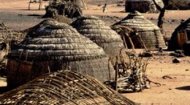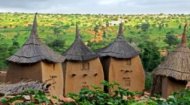The Niger River is indispensable for the survival and prosperity of the West African nations it serves: Guinea, Mali, Niger, Benin, and Nigeria.
- Agriculture: Its floodplains and irrigation schemes support intensive cultivation of staple crops such as rice, millet, and sorghum, which are crucial for regional food security.
- Fisheries: The river sustains a vibrant fishing industry, providing a primary source of protein and income for countless communities along its banks, particularly within the Inland Delta.
- Transportation and Trade: For centuries, the Niger has served as a vital transportation artery, connecting distant communities and facilitating trade. Boats, from traditional pirogues to larger barges, remain essential for moving goods and people across the region.
- Hydropower: The river's immense volume and flow have been harnessed for electricity generation. Major projects like Nigeria's Kainji Dam not only provide power but also aid in flood control and irrigation.
- Biodiversity: Beyond fish and birds, the river system supports a variety of wildlife, including hippopotami, crocodiles, and diverse aquatic flora, contributing significantly to West Africa's natural heritage.
The Niger River has been central to the rise and fall of powerful West African empires. The Ghana, Mali, and Songhai Empires, which flourished between the 8th and 16th centuries, established their wealth and influence largely by controlling the trans-Saharan trade routes that converged on the Niger Bend. Cities like Gao, Timbuktu, and Djenné became prosperous centers of commerce, scholarship, and Islamic learning, their existence intrinsically linked to the river's navigability and agricultural bounty. Even today, the river profoundly influences the cultural practices, traditional beliefs, and daily lives of the numerous ethnic groups residing along its banks.
Despite its immense importance, the Niger River faces escalating environmental and socio-economic challenges. Climate change leading to erratic rainfall patterns, prolonged droughts, and increased desertification threatens the river's flow and the livelihoods dependent on it. Pollution from agricultural runoff, industrial waste, and untreated sewage degrades water quality and harms aquatic life. Overfishing, unregulated dam construction, and the expansion of irrigated agriculture further strain the river's resources.
Recognizing the need for collaborative management, the Niger Basin Authority (NBA), an intergovernmental organization comprising nine riparian countries, works to promote cooperation in the sustainable development and management of the river's resources. Their efforts are crucial in ensuring that the Niger River continues to sustain the millions who call its basin home, preserving this vital African lifeline for future generations.
In conclusion, the Niger River is far more than a mere body of water; it is a dynamic, living system that has shaped the past and continues to define the present and future of West Africa. Its unique geographical journey, incredible ecological richness, and profound human significance cement its status as one of the world's truly great rivers.
|








